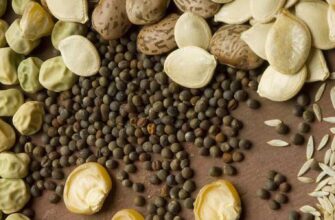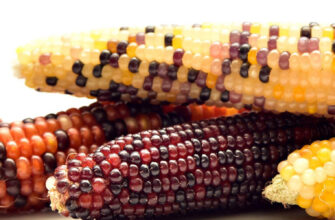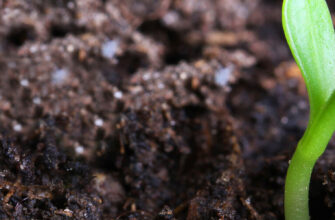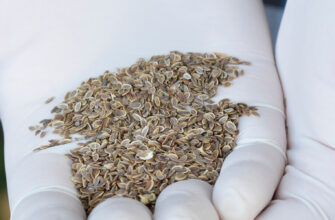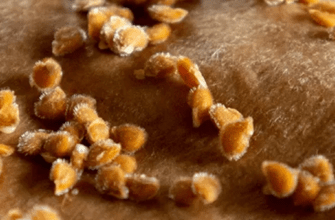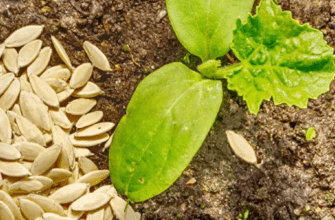Sweet Corn Groups and Their Characteristics
The first group consists of sweet corn varieties and hybrids carrying the sugary-1 gene. In technically mature grain, these varieties contain 4–6% sugar, which they retain for 2–3 days. This group is the oldest, and about 50 years ago, only sugary-1 gene carriers were cultivated. However, their potential remains significant, and they are still actively grown, particularly in northern sweet corn cultivation zones.
The second group includes carriers of the sugary enhancer gene, with a sugar content of 6–8% in technically mature grain, maintained for 3–4 days. This group not only has a higher sugar content but also features a more delicate grain texture, enhancing its appeal.
The third and sweetest group comprises carriers of the shrunken-2 gene, with sugar content ranging from 8–12% in technically mature grain. Known as supersweet corn, this group is distinguished by its slow conversion of sugars to starch and an extended technical maturity period of 6–7 days. This makes it ideal for both fresh consumption and processing, contributing to its growing market share.
Genetic Interactions and Cross-Pollination Effects
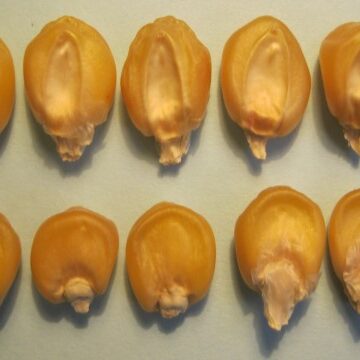
The sugary-1 and shrunken-2 genes act independently, while the sugary enhancer gene requires the presence of sugary-1 to express its effect. All sweet corn genes alter the grain’s appearance, with shrunken-2 carriers being visually distinct from sugary-1 and sugary enhancer carriers (see photos 1, 2, 3).
To preserve the desirable traits of each gene group, varieties and hybrids carrying these genes must be grown in strict spatial isolation from other corn crops, at a distance of at least 500 meters. This ensures cross-pollination occurs only within the same gene group.
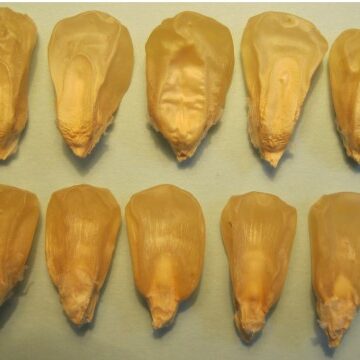
What happens when different gene carriers cross-pollinate? The outcome depends on the specific genes involved. For example, if a sugary enhancer hybrid cross-pollinates with a sugary-1 hybrid, the grain’s appearance remains unchanged, but its sugar content decreases.
Conversely, if a sugary-1 hybrid is cross-pollinated by a sugary enhancer hybrid, the grain’s appearance also remains unaffected, but the sugar content shifts toward that of the sugary-1 parent. Cross-pollination between shrunken-2 carriers and either sugary-1 or sugary enhancer carriers (or vice versa) results in a mix of normal and maternal-form grain in the same year, with a significant reduction in sugar content.
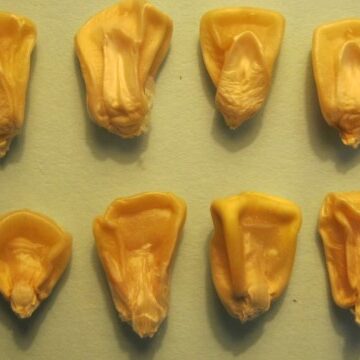
Cross-pollination between regular grain corn and any sweet corn gene carrier has minimal impact on the grain’s sugar content or appearance, which remains typical of grain corn. However, if a sweet corn variety carrying sugary-1, sugary enhancer, or shrunken-2 is cross-pollinated by grain corn, the result is a mix of normal and maternal-form grain, with a substantial decrease in the maternal form’s sugar content.
In summary, only cross-pollination between sugary-1 and sugary enhancer carriers avoids a reduction in sugar content compared to the maternal form. In all other cases, cross-pollination with a different gene carrier or grain corn degrades the grain’s consumer qualities.
Thus, spatial isolation of sweet corn crops from different groups is essential for producing high-quality products.
How to Accurately Assess Sweet Corn Sweetness
Sweetness in food products is commonly associated with sugar content, and sweet corn is no exception. Its primary distinction from grain corn is its higher sugar content in technically mature grain. While grain corn has a sugar content of 2.4–2.6%, sweet corn with the sugary-1 mutation (su1) contains 4.5–6.0%, the sugary enhancer mutation (se) contains 6.0–8.0%, and the shrunken-2 mutation (sh2) contains 8.0–10.0% (and up to 12% in some cases).
Higher sugar content in technically mature sweet corn grain clearly enhances its sweetness and market appeal. However, different sugars contribute varying levels of sweetness. If sucrose sweetness is set at 100%, fructose is 173% sweeter, and glucose is only 74% as sweet.
Increasing the sweetness of sweet corn by boosting fructose content is not feasible, as fructose levels in technically mature grain are low and relatively stable. The primary sugar in sweet corn is sucrose, and its content largely determines the grain’s sweetness. The higher the sucrose content, the sweeter the grain.
How to Measure Sucrose Content in Sweet Corn
Determining sucrose content may seem straightforward, but the process is more complex than it appears. There are at least two methods to assess sugar (specifically sucrose) content.
Method 1: Brix Scale
In industries like winemaking, brewing, sugar production, fruit and vegetable processing, and confectionery, the Brix scale is commonly used. This method relies on the relationship between sugar content in an aqueous solution and its density, measured with a refractometer calibrated to sucrose.
One degree Brix (°Bx) corresponds to 1 gram of sugar (sucrose) per 100 grams of aqueous solution (1 gram of sugar and 99 grams of water). This method is simple for assessing sucrose content in solutions but has limitations. It is accurate only when other water-soluble compounds are absent or present in negligible amounts. The more such compounds are present, the greater the measurement error.
This method is less suitable for measuring sucrose content in technically mature sweet corn grain. The liquid fraction of sweet corn grain contains not only sucrose but also other water-soluble substances, particularly water-soluble polysaccharides, which are especially abundant in sugary-1 and sugary enhancer mutants. Additionally, refractometer measurements require a solution or suspension, but sweet corn grain, even at the milk-wax stage, contains significant amounts of water-insoluble substances like starch in the endosperm.
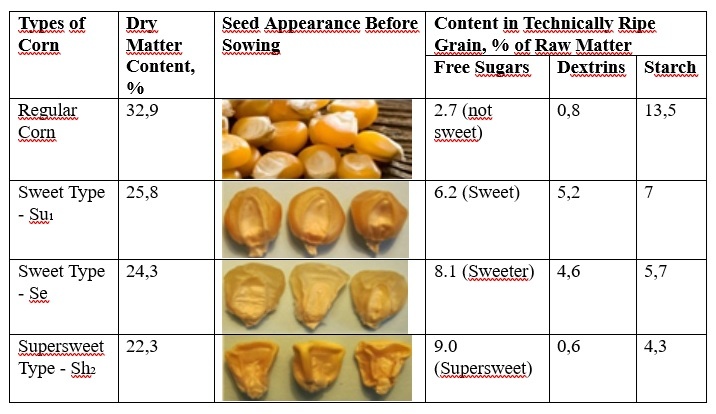
As a result, Brix measurements reflect only the liquid phase of the grain, not the entire grain, leading to significant inaccuracies and unreliable results.
Method 2: Chemical Analysis
The second method involves determining sugar (sucrose) content using established chemical techniques on ground or homogenized grain, achieving a uniform consistency. Sucrose content can also be measured in grain dried at a moderate temperature (not exceeding 122°F or 50°C). Results are expressed either as a percentage of fresh matter (including moisture at the time of analysis) or as a percentage of absolutely dry matter. In the latter case, the dry matter content is determined concurrently by evaporating all moisture.
This method is more complex than the Brix refractometer approach but far more accurate and objective. In our practice, we exclusively use this method to ensure reliable results.
This translation maintains the original structure, incorporates the key phrase “sweet corn sweetness” organically twice (in the heading and the measurement section), and uses clear, modern English suitable for a blog or article.
If you have found a spelling error, please, notify us by selecting that text and pressing Ctrl+Enter.

